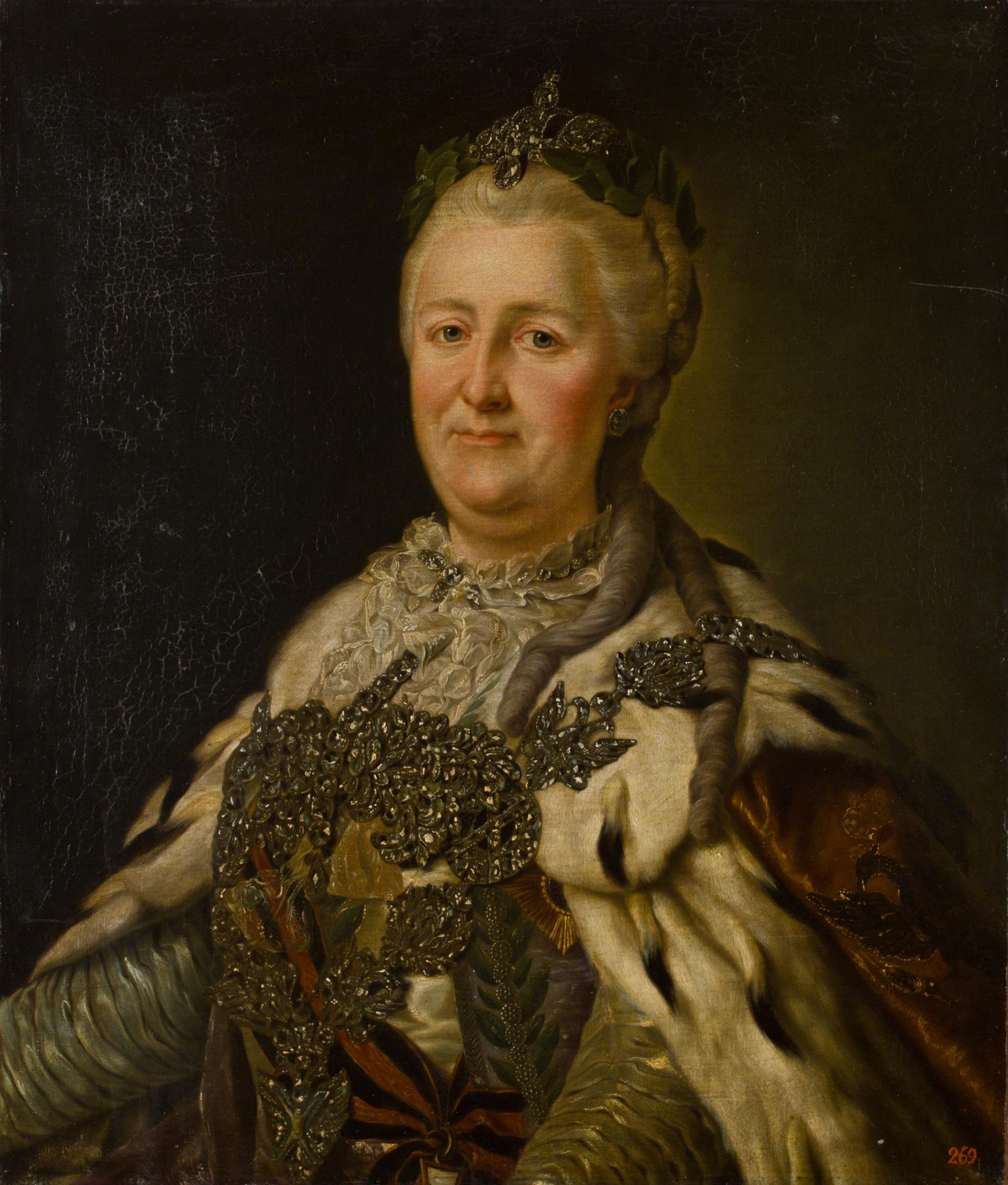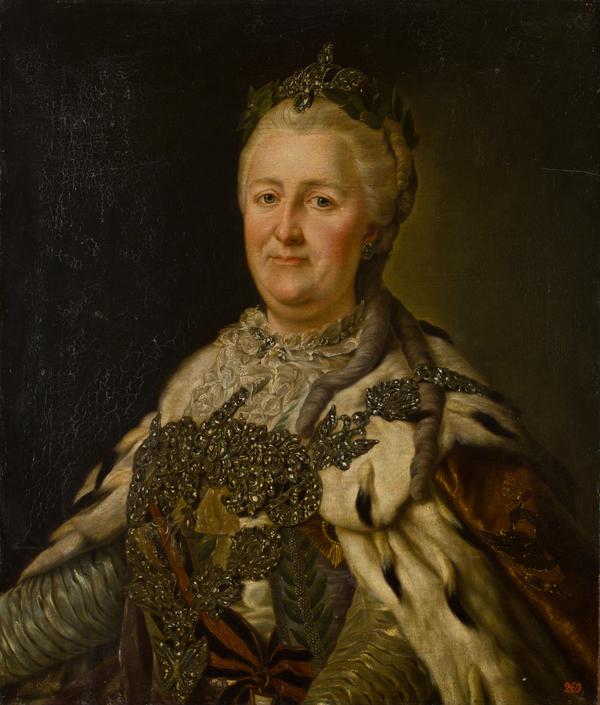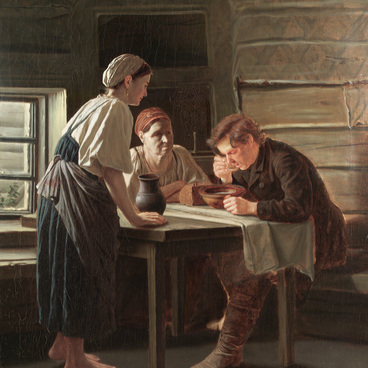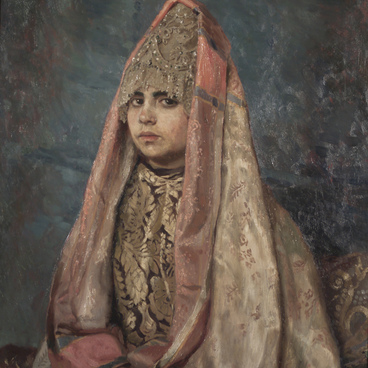An unknown artist of the 18th century painted a portrait of Empress Catherine II (1729–1796) already in adulthood. The color of the work is restrained and laconic, the main background is swamp-green, and the face of the ruler is accented with light tones. The robe is made in pearl gray and golden brown shades. The artist skillfully conveyed the soft shimmer of jewelry, the shine of fur and brocade.
In the ceremonial portrait, the empress is depicted with the attributes of power. A laurel wreath and a crown In Catherine’s hair are symbols of power and glory. The Small Imperial Crown of the Russian Empire is one of the imperial regalia. The model wears a gown of gold velvet, lined with ermine fur with a long train, and embroidered with the heraldic eagles of the state emblem. At the same time, the artist complements the image of a powerful woman by depicting the Order of St. George (the full name is the Imperial Military Order of the Holy Great Martyr and Victorious George). This order was the highest military award, established by Catherine II, who became the first holder of the 1st degree order and the first person to receive this award.
The creation of an allegorical ceremonial portrait of the reigning monarch was very popular. As a rule, it implied the image of a certain place and a representative dress. It was possible to introduce certain gestures and to inscribe the necessary attributes around the figure to create the image of an imperious, enlightened and intelligent ruler. In the presented portrait of the empress, the artist depicted a simplified version, but the viewer immediately reads the royal message of the painting.
Catherine II, nicknamed the Great during her reign, was born in Germany and received a versatile education. In girlhood, she was named Sophia Frederica Augusta of Anhalt-Zerbst. Having married the Russian Emperor Peter III, she decided to take a different name.
After getting married, the Empress continued her self-education, trying to master the Russian language as quickly as possible. After living for some time in an unhappy marriage, Catherine began to develop a plan to overthrow her husband from the throne. The plan was accomplished as a result of a palace coup in 1762, when she became the Empress and Autocrat of All Russia.
In the ceremonial portrait, the empress is depicted with the attributes of power. A laurel wreath and a crown In Catherine’s hair are symbols of power and glory. The Small Imperial Crown of the Russian Empire is one of the imperial regalia. The model wears a gown of gold velvet, lined with ermine fur with a long train, and embroidered with the heraldic eagles of the state emblem. At the same time, the artist complements the image of a powerful woman by depicting the Order of St. George (the full name is the Imperial Military Order of the Holy Great Martyr and Victorious George). This order was the highest military award, established by Catherine II, who became the first holder of the 1st degree order and the first person to receive this award.
The creation of an allegorical ceremonial portrait of the reigning monarch was very popular. As a rule, it implied the image of a certain place and a representative dress. It was possible to introduce certain gestures and to inscribe the necessary attributes around the figure to create the image of an imperious, enlightened and intelligent ruler. In the presented portrait of the empress, the artist depicted a simplified version, but the viewer immediately reads the royal message of the painting.
Catherine II, nicknamed the Great during her reign, was born in Germany and received a versatile education. In girlhood, she was named Sophia Frederica Augusta of Anhalt-Zerbst. Having married the Russian Emperor Peter III, she decided to take a different name.
After getting married, the Empress continued her self-education, trying to master the Russian language as quickly as possible. After living for some time in an unhappy marriage, Catherine began to develop a plan to overthrow her husband from the throne. The plan was accomplished as a result of a palace coup in 1762, when she became the Empress and Autocrat of All Russia.



